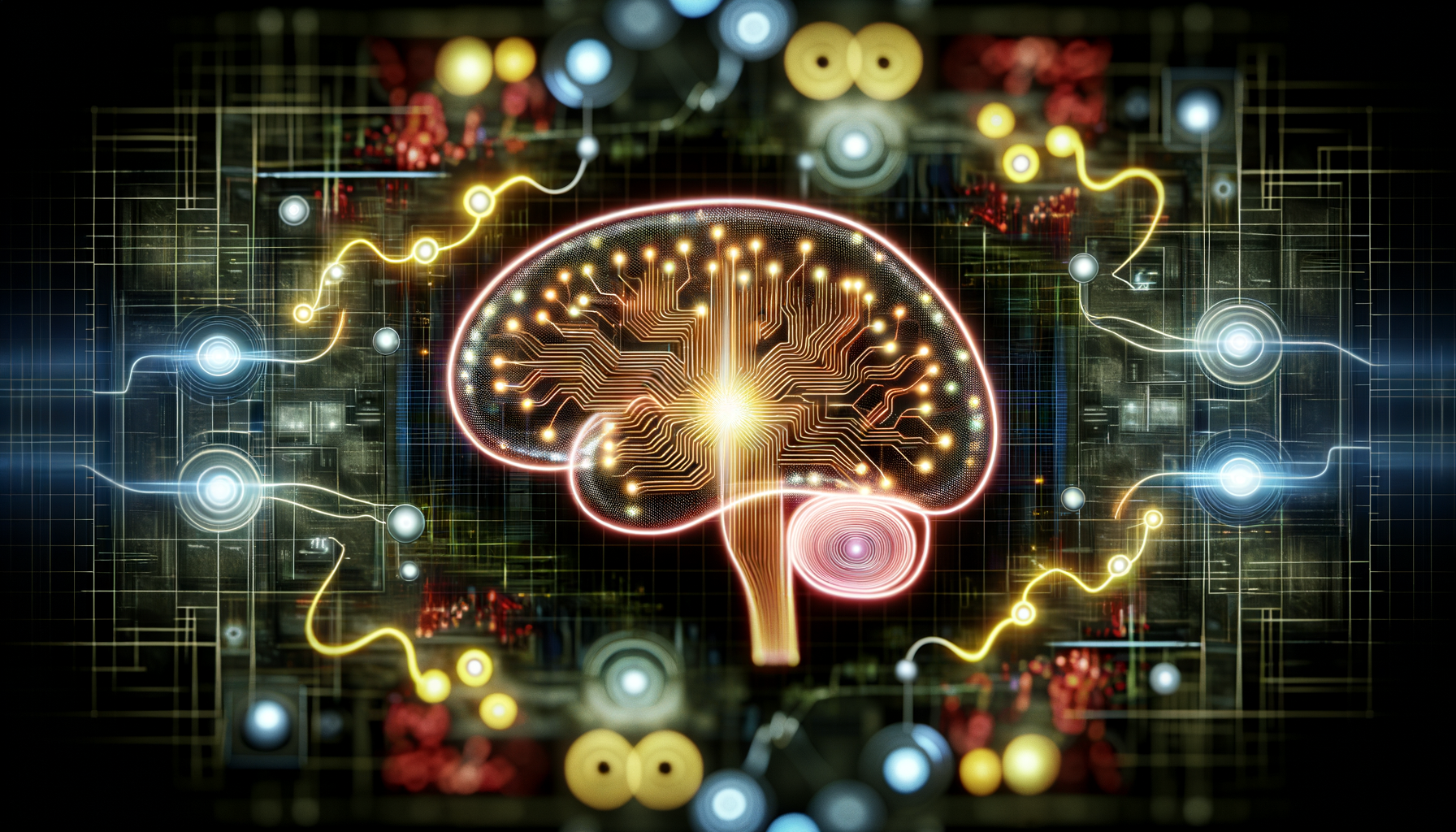Artificial Intelligence (AI) and Machine Learning (ML) represent the cutting-edge of computational technology, creating systems that exhibit intelligent behavior and the ability to learn from data. This article delves deep into the revolution these technologies are championing, from transforming industries to reshaping how we interact with machines.
The Rise of Artificial Intelligence
The Rise of Artificial Intelligence: Artificial Intelligence (AI), an intriguing blend of computer science and robust datasets, aimed at empowering machines to emulate human intelligence, has significantly evolved since its inception. This fascinating journey began in the mid-20th century, marked by the term’s coinage in 1956 by John McCarthy at the Dartmouth Conference. The initial ambition was to create systems capable of sophisticated reasoning, knowledge representation, planning, and perception—mirroring the multifaceted intelligence of humans.
Over the decades, AI’s trajectory witnessed cycles of intense enthusiasm interspersed with periods of disillusionment, known as ”AI winters,” primarily due to exaggerated expectations and subsequent funding droughts. Despite the challenges, these phases were crucial for refining AI objectives and methodologies, leading to the current era of abundance in resources, advanced algorithms, and computational power.
One of the most striking aspects of modern AI’s evolution is its seamless integration into daily technology, often unnoticeable yet indispensable. From personalized recommendations on streaming platforms to intelligent assistants on smartphones, AI’s applications are vast and varied. This ubiquity is attributed to the groundbreaking developments in machine learning and deep learning, enabling machines to learn from data, improve autonomously, and execute tasks with unprecedented accuracy.
The foundation of AI is built upon ambitious goals such as enhancing reasoning, mastering natural language, and replicating human-like perception. These objectives have propelled research and innovation, leading to remarkable achievements such as autonomous vehicles, sophisticated chatbots, and predictive healthcare diagnostics. As AI continues to advance, it remains intrinsically linked to the quest for understanding and amplifying human intelligence, exploring how machines can not only replicate but also augment our cognitive capabilities. This journey from theoretical concepts to practical applications underscores AI’s profound impact on society, revolutionizing how we live, work, and interact with the world around us.
Machine Learning – The Core of AI Evolution
Machine Learning – The Core of AI Evolution, delves into the intricate realm where computers evolve from mere data processors to entities capable of learning and decision-making, a transition central to the evolution of Artificial Intelligence (AI). At the heart of this transformation is machine learning (ML), a subset of AI characterized by algorithms that ingest data, learn from it, and make predictive or classifying decisions. Unlike traditional programming paradigms that rely on explicit instructions, ML focuses on the development of systems that adjust their behavior based on input data.
The journey of ML dates back to figures like Arthur Samuel, who in 1959 defined machine learning as a ”Field of study that gives computers the ability to learn without being explicitly programmed.” This notion underscored the shift from rule-based computing to an era where machines could adapt and improve their performance over time. Samuel’s work on checkers-playing programs laid foundational stones for the domain, illustrating the potential of machines to not merely perform, but to learn and strategize.
Grounded in theoretical frameworks such as probably approximately correct (PAC) learning, ML has grown into a vast field encompassing various learning methods, including supervised, unsupervised, and reinforcement learning. These methodologies enable computers to handle tasks ranging from voice recognition and natural language processing to predictive analytics, showcasing the versatility and breadth of ML’s applicability across domains.
The advent of deep learning and neural networks, inspired by the human brain’s architecture, has catalyzed ML’s capabilities exponentially. Complex tasks that mirror human cognition, such as image and speech recognition, have seen remarkable advancements due to deep learning, underscoring ML’s role as the powerhouse behind AI’s aspirations towards human-like intelligence. Innovations in hardware, like the development of Graphic Processing Units (GPUs) and Tensor Processing Units (TPUs), have further accelerated ML’s progress, allowing for more complex and layered neural network models to be trained more efficiently.
Applications of ML now permeate every sector, from healthcare, where it aids in disease detection and drug discovery, to finance, where it powers fraud detection and automated trading systems. In transportation, ML algorithms optimize logistics and enable autonomous vehicles, illustrating the diversity of ML’s impact.
As ML continues to evolve, it not only propels AI towards mimicking human intelligence more closely but also redefines the boundaries of what machines can achieve. Through its ability to learn and adapt, ML epitomizes the core of AI evolution, setting the stage for a future where AI’s integration into society becomes even more profound and transformative. This evolution into a symbiotic relationship between AI and ML showcases a future where their combined capabilities could offer unprecedented possibilities across all spectrums of human endeavor, yet also presents novel challenges and ethical considerations that must be navigated with foresight and responsibility.
The Symbiosis of AI and ML in the Modern World
Building upon the foundational principles of machine learning detailed in the previous section, we now venture into the fascinating realm of the symbiosis between Artificial Intelligence (AI) and Machine Learning (ML). This junction represents not merely a confluence of two fields but a dynamic synergy that propels the boundaries of what technology can achieve.
Indeed, while AI and ML can be discussed as distinct entities, their interplay is intricately woven. AI dreams up the blueprint for achieving human-like intelligence, setting ambitious benchmarks for understanding, reasoning, and interaction. In parallel, ML equips AI with the necessary tools, enabling it to navigate towards these benchmarks through data. Through ML’s lens, data is not just information but a pathway to learning, recognizing patterns, and making predictions with minimal human intervention.
Take healthcare, for example, where AI defines goals like predicting disease outbreak or personalizing patient treatment plans. ML algorithms digest vast datasets of medical records and research, identifying patterns that can forecast disease spread or optimize treatment plans. Here, the collaboration between AI’s objectives and ML’s capabilities can potentially save millions of lives.
In finance, AI’s vision to automate and enhance decision-making processes meets ML’s ability to analyze historical data, recognize market trends, and predict future events. Such integration not only enhances accuracy in financial forecasting but also brings about revolutionary changes in algorithmic trading and fraud detection.
The transportation sector also benefits from this alliance, with AI’s aspiration for autonomous vehicles becoming increasingly tangible through ML. By learning from millions of driving hours’ data, ML aids in refining the decision-making algorithms vehicles use to navigate and respond to real-world driving conditions, inching closer to AI’s goal of full autonomy.
Yet, as we marvel at these innovations, ethical considerations must remain at the forefront. The AI and ML symbiosis, while potent, necessitates a balanced approach to ensure its alignment with societal values and norms. Issues of data privacy, bias in algorithmic decision-making, and the socioeconomic impacts of automation are critical challenges that need addressing. By anchoring this powerful relationship in ethical principles, we can navigate the future trajectory of AI and ML, ensuring that their evolution remains beneficial and inclusive for all facets of society.
As we delve deeper into this synergy, it’s clear that the intertwined paths of AI and ML are not just shaping the future of technology but are also redefining the very fabric of modern existence. The potential is boundless, inviting us to reimagine what’s possible while conscientiously steering this evolution towards enhancing the human experience.
Conclusions
Artificial Intelligence and Machine Learning have moved from science fiction to central pillars of modern technological advancement. Their synergy has birthed autonomous systems that optimize operations, enhance decision-making, and mimic human-like intelligence with a transformative impact across all sectors of society.

